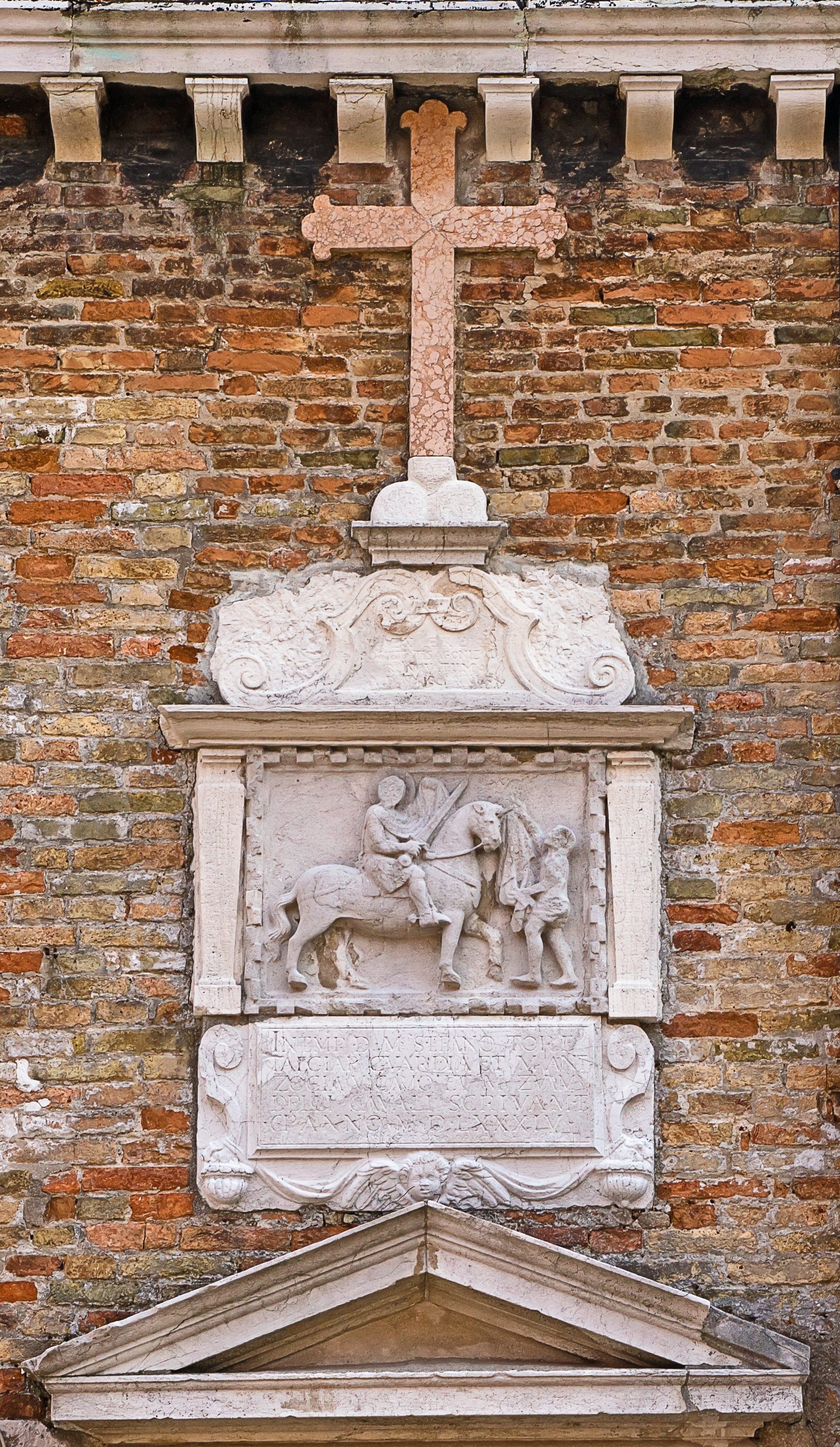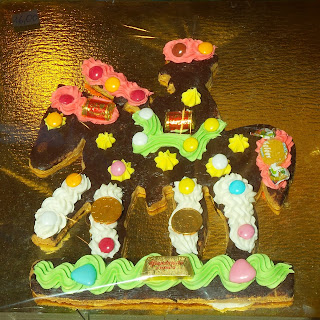Saint Martin's Day: A Particularly Venetian Festival
 |
| A relief of Saint Martin above the door to the Scuola di San Martino |
Saint Martin of Tours was born in Hungary in the 4th century. His father was in the Roman army and he grew up in northern Italy. At the age of 18 he joined the army himself and moved to France. At some point he renounced the army and followed his vocation. Eventually he (apparently reluctantly) became Bishop of Tours. But it was while he was still a soldier that he was riding into the city of Amiens in France when he saw a beggar by the road suffering from the cold in the middle of a downpour. He used his sword to cut his own cloak in two and gave one half to the beggar. Shortly afterwards the sky cleared and the sun came out. That night he dreamt that Jesus was wearing the half that he had given away. It is this story, captured in images of Saint Martin, which is celebrated every November. The story also gives rise to the Italian name given to unseasonally warm weather in early November - L'Estate di San Martino - Saint Martin's Summer.
Saint Martin's Day is the 11th November. It is celebrated loudly every year in Venice by children making their presence felt by banging on upturned pans and lids, singing a rhyme, in the expectation of sweets or coins given by shop owners.
| A closeup of the relief. |
Saint Martin's Day is the 11th November. It is celebrated loudly every year in Venice by children making their presence felt by banging on upturned pans and lids, singing a rhyme, in the expectation of sweets or coins given by shop owners.
The rhyme in Venetian dialect is
S. Martin xe 'ndà in sofita a trovar ea so' novissa (o nona Rita o nona Gigia) so' novissa no ghe gera S. Martin col cùeo par teraThis translates as something like
E col nostro sachetìn cari signori xe S. Martin.
Saint Martin went into the attic to find his girlfriend (or Grandma Rita or Grandma Gigia). Since he did not find his girlfriend, the saint fell on his bottom. And with our little bag, dear Sirs, is Saint Martin.
The Church of Saint Martin
The Church of Saint Martin in Venice is not far from the Arsenale. There are several other churches dedicated to the saint around the city though - one on Burano, one on Murano, and one near the airport among others. The Venice church dates from the tenth century (936) but was completely rebuilt in the sixteenth century from designs by Jacopo Sansovino. The architect turned the entire structure by 90 degrees and gave it a square floor-plan, adding two chapels on each side and a new building to the side of the church became the Scuola di San Martino - School of Saint Martin. Venice has a special tie to Saint Martin as the Scuola once housed the Devotional School of Saint Martin (1335-1771) which owned relics of his finger, tibia and a piece of the cloak. The tibia was given to the Scuola di San Giovanni Evangelista in 1441 in return for restoration work to the church and every year on the 11th of November the relic was carried in a solemn procession from the Scuola di San Giovanni Evangelista to the Church of Saint Martin. This tradition ended with the fall of the Venetian Republic in 1797.If you can read Italian, this is a nice blog with more information about the churches of San Martino in the Lagoon.
The Saint Martin Biscuit
In the days leading up to Saint Martin's Day, the shops in Venice are filled with the Saint Martin's Day biscuit - a knight on horseback - richly decorated with sweets.
If you would like to make this biscuit, you can download a template here or draw one of your own.
The recipe:
Ingredients for a 'San Martino' of about 20x30 cm.
For the biscuit:
250 g plain flour
150 g butter cubed at room temperature
100 g sugar
1 yolk and 1 whole egg
A few drops of vanilla essence
For the decoration:
250 - 300 g icing sugar
1 egg white
5 drop of lemon juice
100 g sweets - smarties, hundreds and thousands, caramels, chocolates
Preparation:
Preheat the oven to 180°C.
Prepare the biscuit base by mixing the sugar, butter, egg and egg yolk.
Keep the egg white to use later.
Once well mixed, add the flour and the vanilla essence. Knead lightly and form into a ball.
Roll out the biscuit onto floured baking parchment to a rectangle about 30x40 cm. Use the template to cut out the shape. You can form the offcuts into extra biscuits. Cook for about 15 to 20 minutes at 180°C. Leave to cool.
Put the egg white in a bowl and add the icing sugar a spoonful at a time, stirring with a wooden spoon. When the first spoonful has been absorbed, add the second and keep going until you have added half of the icing sugar. Now add the lemon juice and keep stirring and add the rest of the icing sugar a spoonful at a time. Stir briskly for a minute until the mixture is shiny.
Put the icing into an piping bag and pipe onto the biscuit. Add any sweets and chocolates. Leave to dry for about 12 hours at room temperature.
If you want, you can cover the biscuit with melted chocolate or coloured icing. If you make a hole in the top, you can use the same recipe to make Christmas tree decorations.
Recipe from Venezia Unica.
Subscribe to:
Post Comments
(
Atom
)










No comments :
Post a Comment